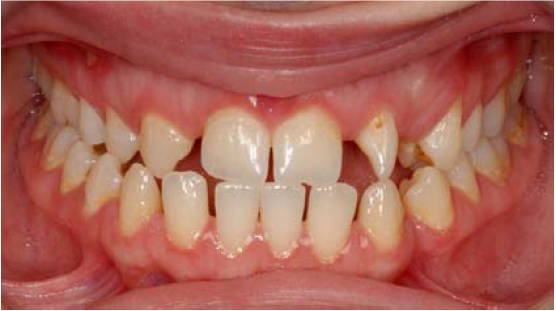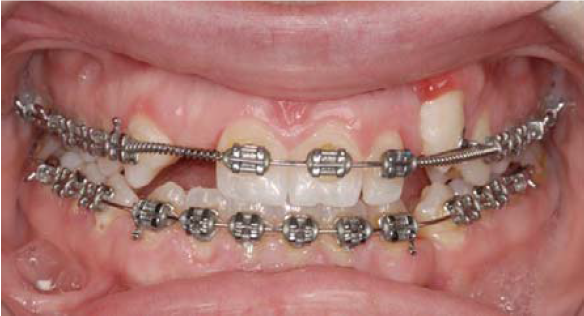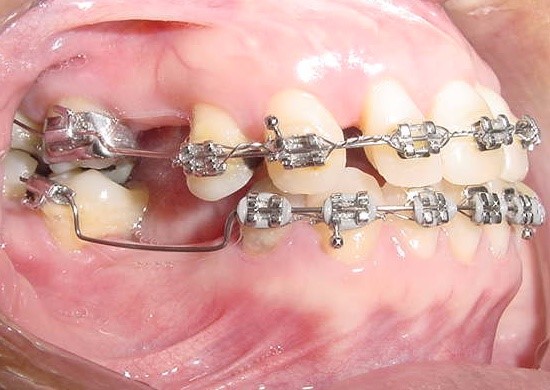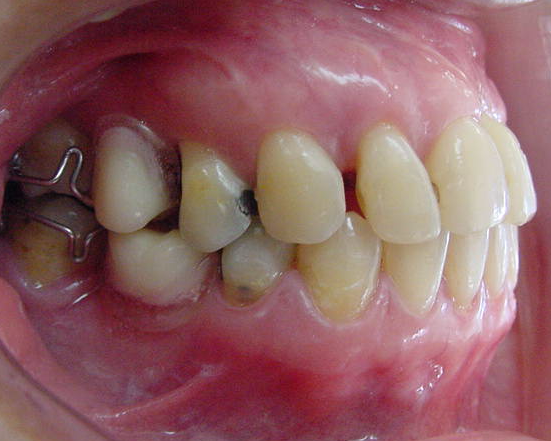What is combined orthodontic and restorative treatment?
Orthodontic treatment is the correction of malocclusion (a condition where the teeth alignment is not good) while restorative treatment involves modification of tooth shape and size, and also for the replacement of missing teeth.
Combined treatment is needed for complex cases to get the best results in aesthetics and function.
What are the cases that require combined orthodontic and restorative treatment?
The cases that require combined orthodontic and restorative treatment:
-
- HypodontiaHypodontia is a term used where there is one or more teeth which is developmentally missing from the normal number in the mouth (missing not because of extraction or trauma).1 Oligodontia is the term used when more than six teeth are missing from the normal number. Prevalence of hypodontia is about 3.5%-6.5%.1 The most common teeth missing are the lower second premolars followed by upper lateral incisors, upper second premolars and lower incisors.
Orthodontic treatment (braces) is needed to rearrange teeth in the best position for replacement artificial teeth or close the natural gaps by moving the teeth together2 (Diagram 1).
Restorative treatment is done after the orthodontic treatment; for replacement of missing teeth or modification of teeth shape or size.



Diagram 1 – Missing two upper lateral incisors and braces to rearrange the teeth for replacement with artificial teeth and reshaping of the teeth
- Adjunctive orthodontic treatmentAdjunctive orthodontic treatment means additional and limited orthodontic treatment to complement the main treatment with specific treatment objectives. The aim is usually to facilitate the planned restorative treatment, for example, to upright the teeth using braces before making the removable denture / bridge and to align teeth; and provide enough space for replacement artificial teeth (Diagram 2). The time taken for adjunctive treatment usually is short because of the limited and specific treatment objectives.



Diagram 2 Alignment of teeth with braces to help provide space for replacement artificial teeth
- HypodontiaHypodontia is a term used where there is one or more teeth which is developmentally missing from the normal number in the mouth (missing not because of extraction or trauma).1 Oligodontia is the term used when more than six teeth are missing from the normal number. Prevalence of hypodontia is about 3.5%-6.5%.1 The most common teeth missing are the lower second premolars followed by upper lateral incisors, upper second premolars and lower incisors.
What does the treatment involve?
Combined orthodontic and restorative treatment will usually involve braces first for aligning teeth; then followed by restorative treatment which may involve modification of tooth shape and size by tooth filling materials, restoration of the tooth with veneer or crown, replacement of missing teeth with removable denture, bridge or implant.
How long does the treatment take?
The treatment duration depends on the case complexity.
Generally, orthodontic treatment will take 18 to 36 months then followed by restorative treatment.
What are the risks of this type of treatment?
The risks of orthodontic treatment include decalcification (destruction of the tooth surface by plaque) / caries (tooth decay), root resorption, periodontal diseases (gum and bone diseases), ulcers in the mouth due to trauma from braces, and possible allergic reactions to the braces or restorative materials used.
What is the cost of combined treatment?
Treatment cost depends on the complexity of the case. It also differs from clinic to clinic depending on the type of restorations. The cost for combined treatment includes payment for orthodontic treatment and restoration with filling materials, denture, crown, veneer, bridge, implant etc.
References
- Goodman JR, Jones SP, Hobkirk JA, King PA. Hypodontia: 1. Clinical Features and Management of mild to moderate hypodontia. Dental Update 1994; 381-384
- Carter NE, Gillgrass TJ, Hobson RS, Jepson N, Meechan JG, Nohl FS, Nunn JH. The Interdisplinary management of hypodontia: orthodontics. Br Dent J 2003 Apr 12; 194(7):361-6
- Jepson NJ, Nohl FS, Carter NE, Gillgrass TJ, Meehan JG, Hobson RS, Nunn JH. The interdisplinary management of hypodontia: restorative dentistry. Br Dent J 2003 Mar 22; 194(6): 299-304
- Lewis BR, Gahan MJ, Hodge TM, Moore D. The orthodontic-restorative interface: 2. Compensating for variations in tooth number and size. Dent Update 2010 Apr; 37(3): 138-40
| Last Reviewed | : | 28 August 2020 |
| Translator | : | Dr. Noorhanizar bt. Mansor |
| Accreditor | : | Dr. Loke Shuet Toh |
| Reviewer | : | Dr. Hjh. Rashidah bt. Dato’ Hj. Burhanudin |







